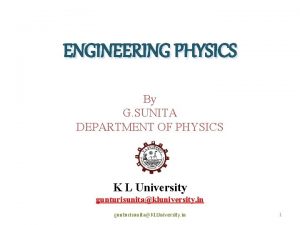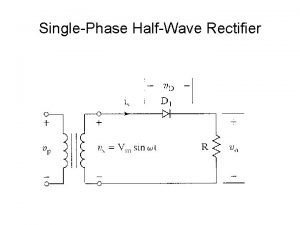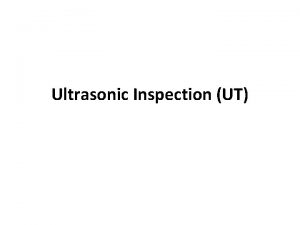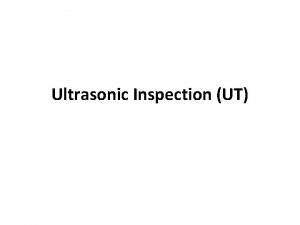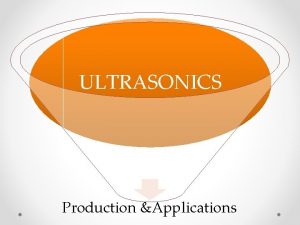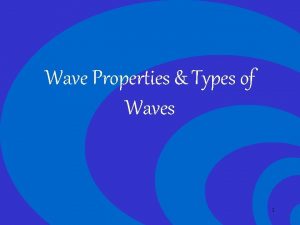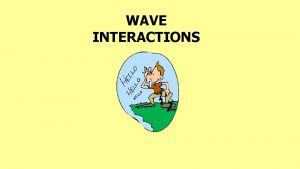TOPIC4 Ultrasonic Waves PARAMETERS of wave Ultrasonic Waves












- Slides: 12

TOPIC-4 Ultrasonic Waves & PARAMETERS of wave

Ultrasonic Waves § Ultrasonic waves are High frequency mechanical waves. § It Propagates in an elastic medium. § It Propagate in solid, liquid & gases due to the vibrations or oscillatory motion of particles within material. § Propagation in vacuum not possible. 21: 54

Wave Propagation in Elastic Material § Material composed of small particles. § Interconnected by elastic forces. § Ultrasonic wave visualized by infinite number of oscillating masses or particles. § Each individual particle is influenced by motion of its nearest neighbor. 21: 54

Wave Propagation in Elastic Material 21: 54 § Inertial and elastic restoring forces act upon each particle. § The forces tends to restore the particle to its original position. § The speed of propagation depends on elastic properties & density of the medium. § Different pattern of vibrational motion exist at atomic level. § Most of them irrelevant to Ultrasonic Testing.

PARAMETERS OF WAVE 21: 54 § Frequency § Wavelength § Velocity § Amplitude § Intensity

Frequency 21: 54 § No. of oscillations/vibrations per second by a particle or object. § Oscillations is displacement from mean position of particle. § One Oscillation consist one crest & one trough § FREQUENCY is denoted by f § UNIT : Hz or Cycle/sec.

Wavelength 21: 54 § Distance between Two consecutive planes allowing particle in the same state of motion i. e. § Distance between two consecutive (One after another) crest or trough. § Denoted by λ § UNIT: Meter (m)

Amplitude § The maximum distance the medium (the material through which a wave travels) moves away from its rest position. • The higher the wave moves up-and- down as it vibrates, the larger the amplitude of the resulting waves. • Denoted by unit: meters (m) 21: 54

Velocity 21: 54 § It is the rate of change of displacement of the particle in any medium. § Velocity is the characteristic of material & constant for that Material. • It is generally affected by two material properties: i. Elasticity ii. Inertia of elasticity. 44

Velocity 21: 54 § Relation between velocity, frequency & wave length is Velocity (m/s) = Frequency (Hz) x Wavelength (m) V =f × λ Where, -V : Velocity in Km/sec or 103 m/s. -f : Frequency in Mc/s -λ : Wavelength in mm This Relation is valid for all type of waves.

Intensity 21: 54 § The Intensity of sound is the energy transferred per second through unit surface area of wave. • Unit : decibel (db) • For two sound intensities I 1 & I 2, One is said to be Greater intensity than the other by a number of decibel (db).

Intensity 21: 54
 Magnetostriction method
Magnetostriction method Performance parameters of half wave rectifier
Performance parameters of half wave rectifier Half wave full wave rectifier
Half wave full wave rectifier A ____ is a repeating disturbance or movement that
A ____ is a repeating disturbance or movement that Long waves and short waves
Long waves and short waves Velocity frequency wavelength triangle
Velocity frequency wavelength triangle Mechanical waves examples
Mechanical waves examples Full wave center tapped rectifier
Full wave center tapped rectifier The wave chapter 10
The wave chapter 10 Difference between full wave and half wave rectifier
Difference between full wave and half wave rectifier P and s wave arrival time chart
P and s wave arrival time chart Odd half wave symmetry
Odd half wave symmetry Example of longitudinal wave
Example of longitudinal wave
